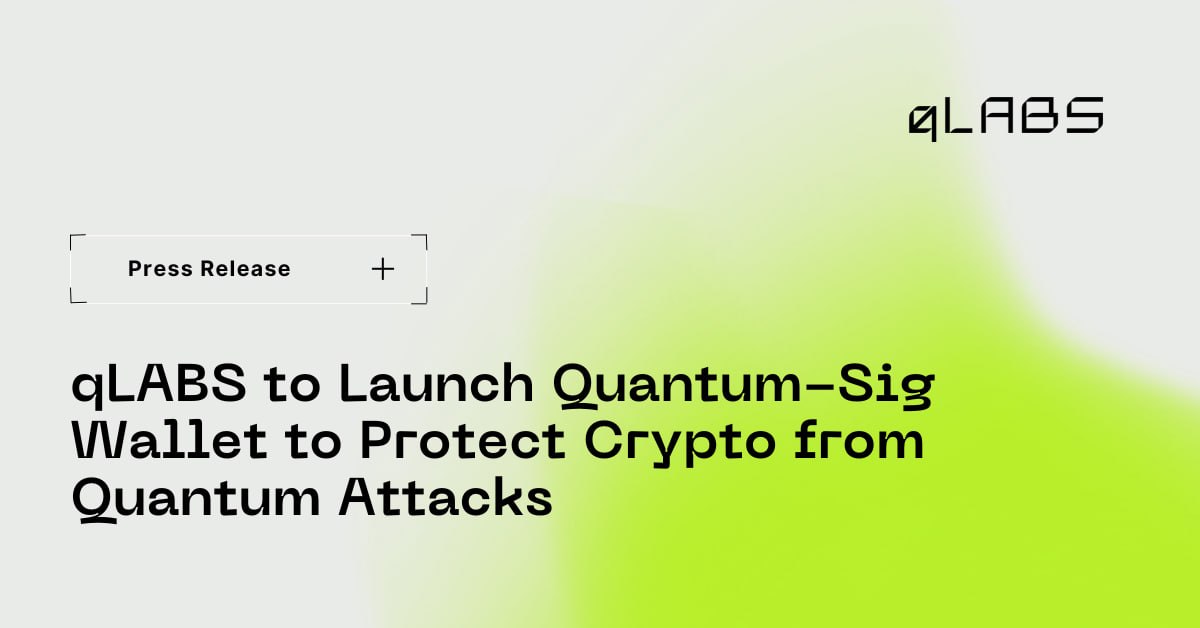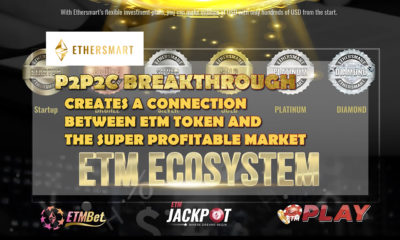Press Release
DeFi Yield Protocol Liquidity Providers Earn $204,718 in ETH in just 10 days Staking DYP

The Defi yield protocol (DYP) allows all users to provide liquidity while earning returns in DYP, the native ERC-20 token token underpinning the project.
The DYP token has been available for purchase and trading on leading Defi platform Uniswap for some time, with liquidity locked for one year with UniCrypt.
Contracts for DYP are routinely audited by PeckShield and the Blockchain Consilium and rely on SecurityOracle. These safeguards help protect the decentralized network from smart contract bugs that can result in security breaches such as flash loan attacks.
The DYP interface is also quite simplified, enabling both novel and professional yield farmers to use the protocol and earn lucrative rewards. The secure and user-friendly nature of the DYP platform guarantees users the best experience in open finance.
What’s more, DYP’s governance dApp gives full control of the protocol to the community, which votes on vital upgrades such as new liquidity pools and fees. This governance mechanism promotes transparency and fairness and deters nefarious actors from infiltrating the network.
The DYP Staking Protocol is Live!
DYP has now unveiled its unique staking protocol that allows users to provide liquidity and earn rewards via the ETH smart contract integrated with the Metamask wallet. Now all crypto enthusiasts can earn some free ETH by staking their tokens on DYP.
DYP staking pools allow token holders to activate Ethereum rewards and access a wide range of benefits via the DYP staking and governance dApp. The protocol amassed $36M in total value locked (TVL) just over a week after launch and looks sure to spur some interest in the market by rewarding stakers in Ethereum. As of this article’s writing, TVL stands at just over $46M.
To celebrate the staking dApp launch and the listing on Uniswap and Bithumb Global, the DYP team has announced it will give away $1000 worth of ETH. The protocol supports several staking pools; DYP/ETH, DYP/USDT, DYP/WBTC, and DYP/USDC pools are currently available to users.
Investors can start earning passive income by depositing liquidity provider tokens (Uniswap LP tokens) into the available DYP staking pools. To access the staking dApp and choose your staking pool, click on app.dyp.finance and connect your Metamask wallet.
Each pool comes with four distinct staking options and offers rewards starting from 30.000 DYP up to 100.000 DYP each month, depending on the lock time (minimum of three days up to 90 days).
Essentially, DYP functions like most other Defi tokens in terms of staking and governance, although it raises the bar with its new strategy that pushes ROI to the maximum.
For one, the platform stands out because of its issues rewards paid in Ethereum directly, a feature that helps ease inflation while integrating additional value in the ETH ecosystem.
Moreover, all DYP staking pools feature an integrated anti-manipulation feature that guarantees a minimum of 2.5% slippage. This tech allows staking pools to maintain token price stability while offering a secure and streamlined process for end-users.
DYP Moves to Solve Issues Plaguing DeFi
The dev team behind DYP set out to solve the biggest problem plaguing the Defi space, which is whales’ power to control DeFi networks. One famous example of such a whale attack was the recent Sushi dump where the anonymous founder of SushiSwap dumped his tokens for ETH.
The DYP protocol prevents such occurrences by automatically converting all DYP tokens to ETH. The system then distributes the rewards to liquidity providers in a fair way to all pool participants.
In detail, the DYP system automatically converts all pool rewards from DYP to ETH at 00:00 UTC every day; Wrapped Ethereum (WETH) is distributed as a reward to the liquidity providers.
The DYP smart contract is also designed to maintain the DYP token price. Whenever the DYP price fluctuates beyond 2.5% in value, the maximum token amount that doesn’t affect the price is swapped to ETH. The anti-manipulation feature then distributes any remaining DYP tokens in the next day’s rewards.
If there are still leftover DYP tokens, the protocol’s decentralized governance model kicks in; the DYP governance gets to vote on whether undistributed DYP rewards will be issued to token holders or burned.
As of this article’s writing, DeFi Yield Protocol paid 290 ETH rewards worth $204,718.78 in just 10 days to the liquidity providers.
Press Release
qLABS to Launch Quantum-Sig Wallet to Protect Crypto From Quantum Attacks

qLABS, the first quantum native crypto foundation, announced the upcoming launch of the Quantum-Sig smart contract wallet. This wallet introduces enterprise-grade post-quantum cybersecurity directly into the Web3 environment through a strategic alliance, as previously announced, between qLABS and 01 Quantum (TSX-V: ONE; OTCQB: OONEF).
Next-Generation Security for Digital Assets
The Quantum-Sig wallet technology will protect any smart-contract-based token such as Ethereum, HYPE or Solana including leading stablecoins such as USDT and USDC. At the core of this innovation is the upcoming qLABS quantum resilient ecosystem token known as qONE which will become the primary utility token powering this new security protocol across Web3.
This innovation directly addresses the accelerating risk of Q-Day which is the moment when it is anticipated quantum computers will be capable of breaking the classical cryptography that secures today’s digital assets. As a result, funds held inside traditional wallets that rely on classical signatures can be compromised. The Quantum-Sig wallet is designed to provide a future-proof safeguard against this threat.
“Quantum-Sig is a real breakthrough. It adds quantum level protection without new wallets, without new chains and without user friction,” said Antanas Guoga (Tony G), President of qLABS. “We are delivering the security Web3 needs without changing the way people already hold and trade crypto.”
Andrew Cheung, CEO of 01 Quantum, added, “We are excited to see our patent-pending QDW technology applied in a production environment to mitigate the Q-Day risk. By embedding post-quantum cryptographic primitives directly into the Quantum-Sig wallet introduces a quantum circuit-breaker architecture that neutralizes classical key compromise. This implementation demonstrates how our technology can deliver quantum-resilient transaction signing at scale, ensuring that digital assets remain secure today and in the post-quantum world of computing.”
Market Context
The global digital asset market exceeds three trillion USD according to CoinMarketCap. Regulatory bodies in several regions have already warned that quantum resilience will soon be a requirement for long term financial security. Despite this maturity, the industry remains exposed due to reliance on classical cryptographic algorithms such as ECDSA. Quantum-Sig wallet technology addresses this gap by providing broad-spectrum protection without sacrificing interoperability or performance for smart-contract based-tokens such as Ethereum, HYPE or Solana including leading stablecoins such as USDT or USDC.
How it Works
The Quantum-Sig wallet applies security principles that are similar to the multi-signature wallets commonly used throughout Web3. In a standard multi-signature setup, two or more signatures are needed to release assets from a contract. In the case of the Quantum Sig wallet, the smart contract requires an additional signature that must be signed by a quantum resilient private key. The zero-knowledge proof engine which is at the core of this innovation, makes it possible to verify large quantum-safe signature data on existing chains. As a result, a malicious actor cannot withdraw funds even if they compromise the classical key. The Quantum-Sig wallet ensures protection at the smart contract level while maintaining speed and interoperability for users and developers.
Technical Highlights
- Patent-pending method (US #19/396,202): Implementation of PQC circuit breaker.
- Performance optimization: Compatible with existing Layer 1 chains.
- Scalable toolkit: Includes support for custodian wallets and existing post-quantum stablecoins.
The qONE token, which is a quantum-resistant token on Hyperliquid, serves as the ecosystem asset that grants access to quantum resilient wallet functions, advanced security features, protocol governance and the broader quantum safe infrastructure developed by qLABS. The qONE initiative is designed to synchronize community engagement with the adoption of the Quantum-Sig technology, thereby incentivizing the sustained expansion of the ecosystem.
Financing and Growth
qLABS confirmed that it completed its pre-seed round financing which was over-subscribed and raised USD $390,000 in early-stage capital from strategic investors, establishing an implied market valuation of USD $6 million for the Tier # 1 pre-seed round. This marks the first step in a multi-stage financing plan by qLABS that is expected to include two additional rounds and the broader distribution of the qLABS token to the community as development and adoption continue to grow.
About qLABS
qLABS is the first quantum-native crypto foundation, developing blockchain solutions that are resistant to quantum computing threats. With a focus on post-quantum security, qLABS builds infrastructure that will protect Web3 from Q-Day and beyond.
For more information visit qLABS’s web site at https://qlabs.tech/ / https://x.com/qlabsofficial and follow them on their blog at https://www.linkedin.com/company/qlabsofficial/
About 01 Quantum Inc.
01 Quantum Inc., formerly 01 Communique Laboratory Inc., (TSX-V: ONE; OTCQB: OONEF), is known for its innovative work in post-quantum cybersecurity and remote access solutions. The Company’s cyber security business unit focuses on post-quantum cybersecurity with the development of its IronCAP™ product line. IronCAP™’s technologies are patent-protected in the U.S.A. by its patents #11,271,715 and #11,669,833. The Company’s remote access business unit provides its customers with a suite of secure remote access services and products under its I’m InTouch and I’m OnCall product offerings. The remote access offerings are protected in the U.S.A. by its patents #6,928,479 / #6,938,076 / #8,234,701; in Canada by its patents #2,309,398 / #2,524,039 and in Japan by its patent #4,875,094. For more information, visit the Company’s web site https://01quantuminc.com | https://01com.com and follow us on our blog at https://blog.01com.com/wp
Press Release
Loadit Unveils Interactive MVP and Files Sweeping Unified Financial Rail Patent

Patent-Pending Architecture Covers AI Routing, Offline Transactions, Temporal Settlement, and Energy as Native Money
Loadit today launched its public interactive MVP at https://mvp.loadit.net and simultaneously filed a landmark non-provisional patent application that consolidates ten previously separate financial rails into one unified, interlocking system.
The newly filed patent (application titled “Loadit Unified Financial Rail”) is now officially patent-pending with the USPTO and covers the entire Loadit technology stack, including:
• AI-orchestrated multi-rail routing (AERO)
• Identity-verified offline transactions (IVOR)
• Temporal programmable settlement (TSM)
• Energy-native monetary units backed by verifiable kWh/MJ (ENM)
• Quantum-optimized path selection and key management
• Universal value conversion across cash, card, fiat, crypto, stablecoins, and tokenized assets
• Geo-temporal compliance engine
• Self-healing fault-tolerant architecture
• Multi-reality (AR/VR/BCI) transaction interfaces
• Point-of-sale cash-to-crypto ingestion with zero new hardware
The live MVP at https://mvp.loadit.net lets anyone explore every patented layer in real time: watch the AI engine score and select rails, trigger an offline biometric transaction, lock in retroactive or future settlement prices, and convert dollars into spendable tokenized kilowatt-hours backed by real metered energy.
A companion site at https://loadit.net showcases the simplest merchant use case: any existing checkout counter becomes a crypto on-ramp in seconds using just a printed QR code.
“Most projects solve one piece of the puzzle. We just patented the entire operating system in one filing,” said Colt Trudell, founder and sole inventor. “The MVP is public today so the world can see exactly how Loadit turns decades of fragmented payment and energy infrastructure into a single coherent rail.”
Loadit is now actively seeking investors as it prepares to scale its unified financial rail into global retail, fintech, and energy markets.
About Loadit
Loadit is building the unified settlement layer for cash, cards, crypto, and energy. One architecture. Zero hardware lock-in. Patent-pending worldwide.
https://mvp.loadit.net – full interactive demo
https://loadit.net – merchant on-ramp
colt@loadit.net
Blockchain
LYNK Emerges as Community-First Token on Solana Following Contract Swap

LYNK reintroduces itself after a 1:1 contract migration, touting locked supply and community governance as it seeks traction within the Solana ecosystem.
LYNK (ticker: LYNK), a community-focused token on the Solana chain, returned to the market this week after completing a 1:1 contract swap. CoinMarketCap lists the token at roughly $0.0034 with a reported market cap near $797,500 and 24-hour volume of about $17,500, reflecting significant short-term volatility typical of newly relaunched community tokens.
Built and marketed as a community-driven project, LYNK positions itself as “more than just a meme coin,” emphasizing transparency, holder participation and education. The project page notes that roughly 76.64% of the supply is locked for 12 months, a detail the team highlights as a stability measure designed to align incentives and limit immediate sell pressure. CoinMarketCap shows a total supply of about 999.89 million LYNK, with a self-reported circulating supply of 233.53 million.
Technical and market notes on the CoinMarketCap listing indicate the token sits in the Solana ecosystem and is tagged with community-oriented categories. The page also flags the recent contract migration — an important operational step that can affect exchange listings, wallet compatibility and on-chain tracking. Explorers linked from the listing point to Solana network records for both the old and new contracts.
Community signals on the listing point to a small but active holder base; CoinMarketCap displays about 290 holders at the time of publication. That modest holder count, coupled with a high short-term price swing, signals that LYNK remains an early-stage token where liquidity and distribution are still evolving.
For readers tracking new Solana projects, the LYNK listing is worth noting for its combination of a large proportion of locked tokens, a recent 1:1 contract migration and an explicit community-first narrative. These elements will likely shape how the token is stewarded and traded in the coming months.
-

 Crypto4 years ago
Crypto4 years agoCardalonia Aiming To Become The Biggest Metaverse Project On Cardano
-

 Press Release5 years ago
Press Release5 years agoP2P2C BREAKTHROUGH CREATES A CONNECTION BETWEEN ETM TOKEN AND THE SUPER PROFITABLE MARKET
-

 Blockchain5 years ago
Blockchain5 years agoWOM Protocol partners with CoinPayments, the world’s largest cryptocurrency payments processor
-

 Press Release5 years ago
Press Release5 years agoETHERSMART DEVELOPER’S VISION MADE FINTECH COMPANY BECOME DUBAI’S TOP DIGITAL BANK
-

 Press Release5 years ago
Press Release5 years agoProject Quantum – Decentralised AAA Gaming
-

 Blockchain5 years ago
Blockchain5 years agoWOM Protocol Recommended by Premier Crypto Analyst as only full featured project for August
-

 Press Release5 years ago
Press Release5 years agoETHERSMART DEVELOPER’S VISION MADE FINTECH COMPANY BECOME DUBAI’S TOP DIGITAL BANK
-

 Blockchain6 years ago
Blockchain6 years ago1.5 Times More Bitcoin is purchased by Grayscale Than Daily Mined Coins






